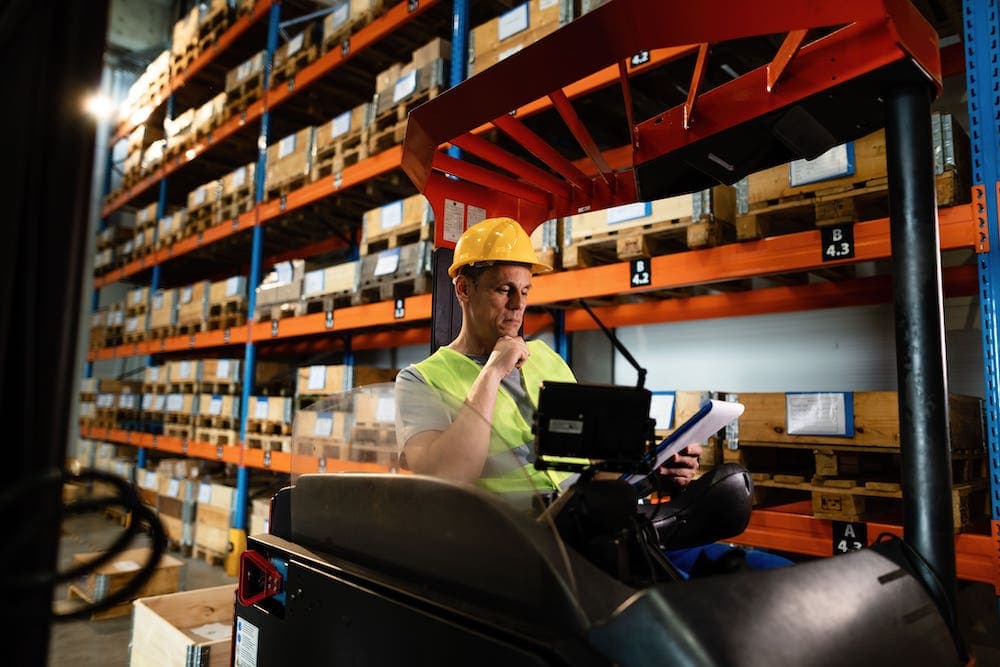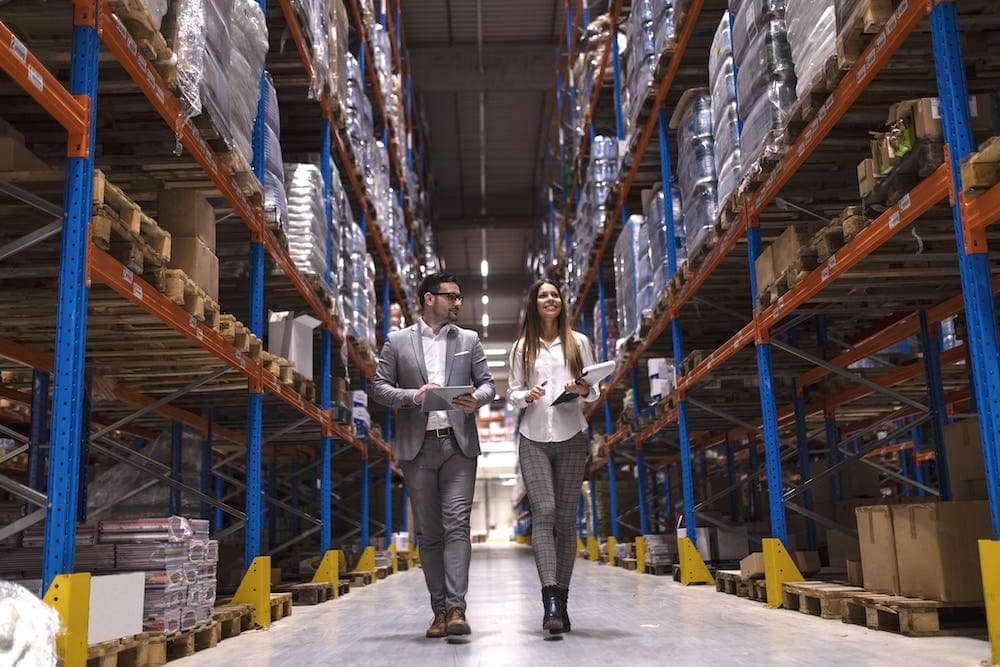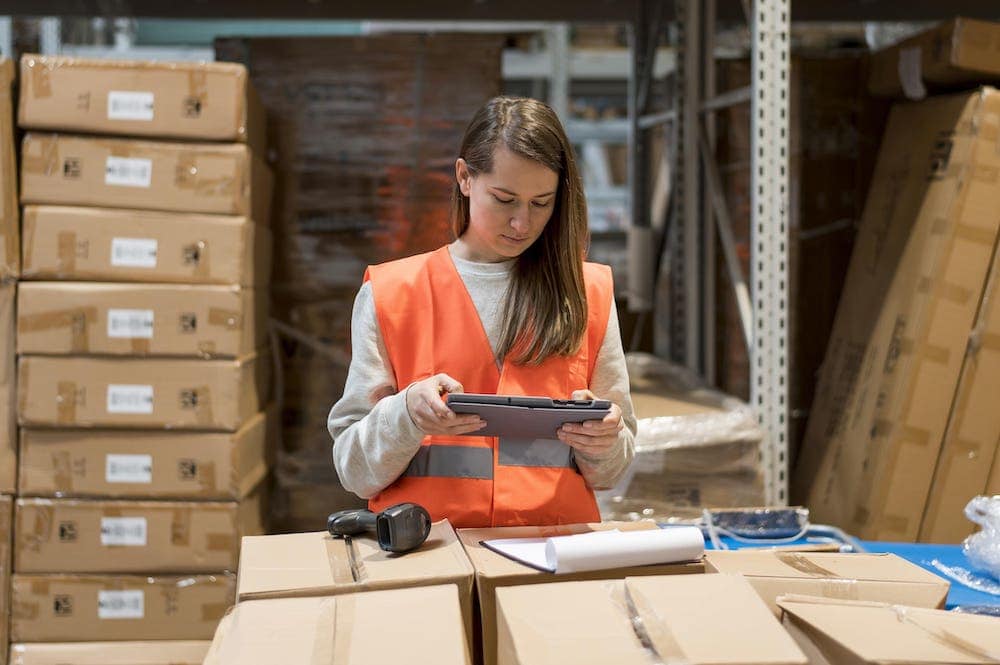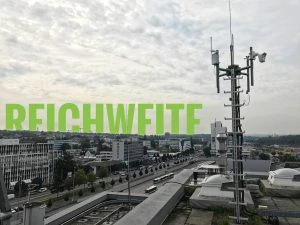IoT-Applications have become an integral part of modern warehouses. Anyone who forgoes digitalization here will eventually no longer be able to keep up. Large fashion chains that can react immediately thanks to IoT applications ensure their survival and profits. But in which areas can the Internet of Things (IoT) be of interest to warehouses?
IoT in the warehouse has revolutionized the world: The days of employees walking through the warehouse in the evening to check which shelf needs replenishing are long gone in warehouses that are profitable. Reorders are automatically placed via IoT in the warehouse when sales are reported or storage locations are reported as empty. IoT-The new applications and networks have already gained a foothold in numerous industries, where they provide incredibly valuable services, for example in:
- Car manufacturing and distribution
- Food trade and production
- Industrial production
However, just as in these key industries, IoT can and is used for warehouse equipment. With IoT applications in the warehouse, numerous processes can be automated and simplified. This ranges from the flow of goods to the prevention of theft. The warehouse is part of the chain between parts supplier, product manufacturer, wholesaler, retailer and end customer. Warehousing is expensive. Having slow-moving stock in the warehouse costs just as much money as not being able to sell successful goods due to a lack of stock. Successful warehouse facilities in Europe even go so far as to use information obtained from IoT applications in the warehouse to directly control the production of goods in Asia. Products that sell successfully are immediately re-produced and re-delivered.

Fashion chains and department stores that rely on RFID and IoT
Retailers, fashion labels and chains have long relied on IoT in the warehouse and use RFID chips to record not only the goods in the warehouse or department store, but even the product from production to the store exit door. Examples of this are
- H&M
- Superdry
- Marc O`Polo
- Zara
...to name just a few.
IoT in the warehouse can do much more than you think
Much more information can be obtained via IoT in the department store than is generally thought, so in addition to known information about stock levels, shelf stock, sales and thefts, information such as:
- Which products are present in a delivery and how often? The recording takes place e.g. automatically via RFIDor NFC chips
- The warehouse employee can receive information about the product directly electronically at the shelf, such as item type, schedule for subsequent deliveries, item stock, item properties, future goods outflows
- Which items are taken out of the warehouse particularly frequently - modern IoT applications then rearrange such fast-moving items in the warehouse so that routes are shortened. Dynamic warehouse optimization significantly reduces material procurement costs.
These are the top 5 IoT applications in the department store:
Today, IoT technology can be found in all leading warehouse facilities. The software, networking and evaluation often make the difference. Overall, the following five key effects are frequently encountered in the IoT warehouse sector:
- Improvement of inventory management - increase of inventory accuracy
- Asset Tracking in the warehouse - everything from raw materials, consumables and supplies to tools can be tracked and at the touch of a button you get real-time information on what is where and in what condition
- Improvement in predictive maintenance of facilities and equipment
- Improvement of environmental monitoring in warehouses
- Automation of energy management in warehouses

The stock level is more accurate via IoT
Anyone who uses IoT in the warehouse has a much more accurate stock level in the computer, which means that it is much less likely to sell something that should be there but is no longer there. Such stock shortages can be largely avoided using IoT technology. Sensors on the shelf recognize how often which goods are still there. Empty shelves can also be detected by sensors. If the shelf actually reported as empty does not match a computer inventory, this can either be immediately adjusted to reality or ejected to checklists. Both measures ensure that goods that are no longer available are not sold at all, which then leads to dissatisfied customers who have to be turned away after making a purchase.
IoT in the warehouse reduces searching
Because all assets in the modern warehouse are equipped with IoT technology, the search effort is also eliminated in many cases. Nobody has to search for a forklift or an ant any more, because you know where they are at the touch of a button. The same applies to tools, company vehicles or inventory. Searching costs money. With IoT in the warehouse, searching is a thing of the past. IoT means finding instead of searching. IoT-Sensors also report empty diesel tanks or lubricating oil containers that are running low in good time, as well as the emptying of copy paper stocks. In many companies, there is still the employee who removes the last packet of some consumable without reordering it. With IoT in the warehouse, this is a thing of the past, as are the consequences.
IoT ensures better maintenance of devices and equipment
Thanks to IoT technology in the warehouse, the devices and equipment used there last longer because maintenance intervals can be better recorded and evaluated. Necessary maintenance appears on monitors or smartphones and can be made dependent on the time of use, movements or processed quantities. Sensors provide the necessary data basis.
IoT in the warehouse improves the environmental conditions in the warehouse
Thanks to IoT applications in the warehouse, environmental conditions can be permanently recorded and evaluated. And what is even more important: the response can be immediate and automated. If the temperature rises, an air conditioning or ventilation system can provide countermeasures. If the CO2 content in the warehouse rises (e.g. due to incoming vehicles), the ventilation can be controlled accordingly. Roof hatches can be closed automatically when it rains, etc. This can improve working conditions for employees and also productivity.

IoT in the warehouse improves energy management
What used to be motion detectors that switched lights on or off are now IoT sensors. These can ensure more efficient use of energy. This can range from automatically switching off lighting in unused rooms to electrically controlling remote windows or appliances. In many companies, automatic switching of the energy supply from their own photovoltaic system on the roof to the local electricity supplier is already standard anyway.
Conclusion:
If you want to optimize processes in the warehouse, there is no getting around the use of modern IoT applications in the warehouse. Without them, it would be impossible to work like in the Stone Age and therefore not be competitive. IoT-The applications ensure greater accuracy, more efficiency and faster processes in many areas of the warehouse. Progress in the area of IoT in the warehouse is so fast and so great that even for companies that implemented the first IoT approaches in the warehouse years ago, there are now significant opportunities for improvement that offer further potential for savings and improvements.
The experts at SmartMakers are on hand with help and advice for anyone who has recognized how important IoT can be for a warehouse company.




